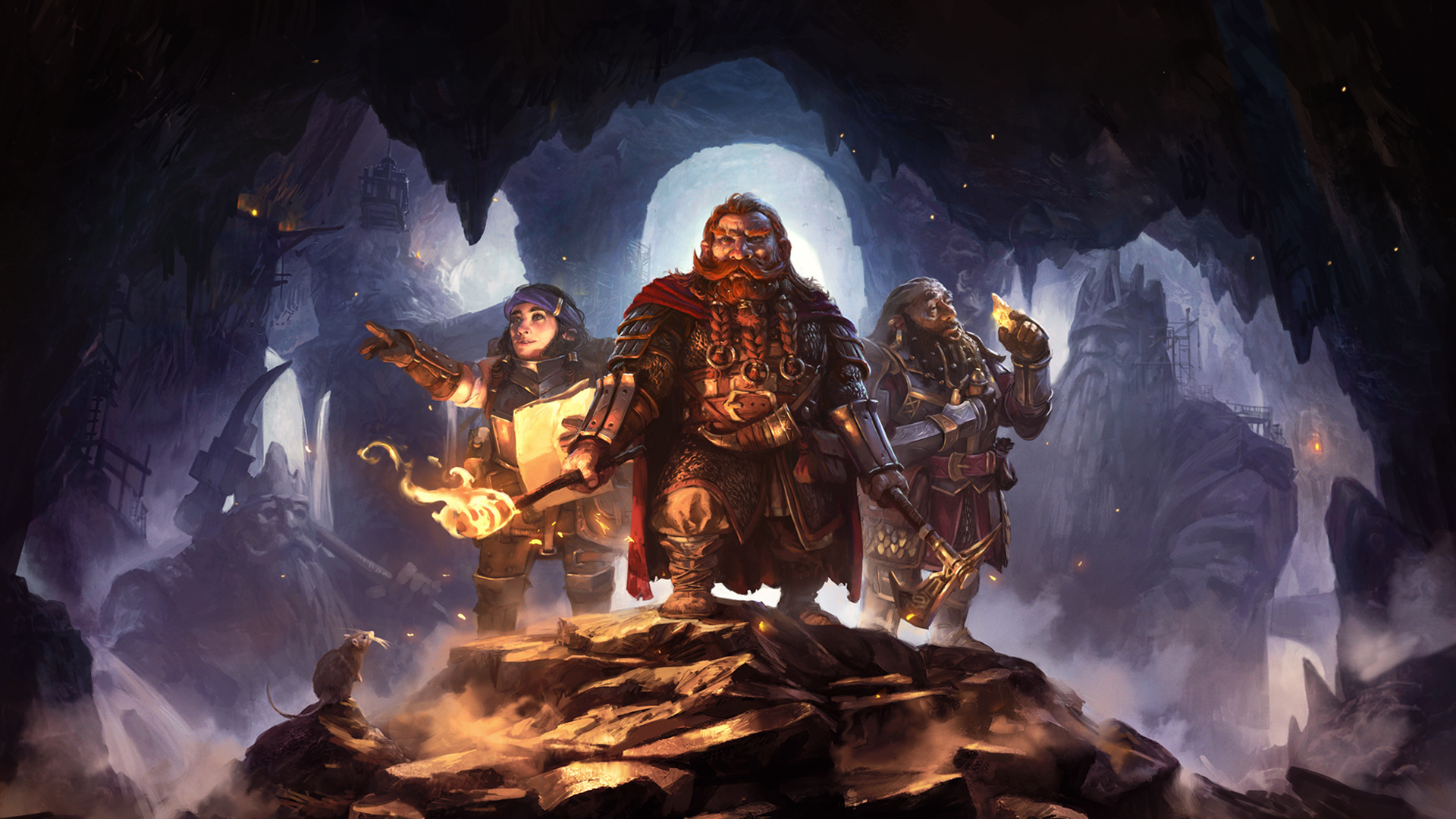Our Verdict
Don’t be a fool of a Took and rush into Moria. An authentic and authentically grueling game.
PC Gamer's got your back
What is it? A survival crafting game set in the Mines of Moria from The Lord of the Rings.
Release date October 24, 2023
Expect to pay $40/£31.70
Developer Free Range Games
Publisher North Beach Games
Reviewed on Intel Core i7-10750H, 16GB RAM, GeForce RTX 2060
Steam Deck N/A
Link Official site
One of my best sessions in The Lord of the Rings: Return to Moria was when it forgot to load in the enemies. Can you imagine how much easier the Fellowship would have had it, without the goblin horde or that big fiery Balrog? In the brief time before I reloaded and all the monsters swarmed back into the place, I was free to explore without interruption by Moria’s stiff, buggy, deeply frustrating combat.
Monsters have clipped through the scenery, helpfully removing themselves from ongoing battles. They’ve gone inert and let me adorn them with arrows, and popped out of existence around me. Only a handful of times, I hasten to add, but when you factor in other, more serious issues—like the frequently stuttering framerate—I’m starting to think Gandalf was right about avoiding Moria.
Not that Gimli would have listened to him: he’s dead-set on reclaiming the dwarven mine, in this Valheim-esque survival game set in the Fourth Age (post-Lord of the Rings) of Middle-earth. It’s a stirring way to begin the game—by having actual John Rhys-Davies making a speech—as you enter the character creator and make the beer-bellied dwarf of your dreams.
A bungled explosion leaves your character (or characters, if you’re playing in co-op, which is invite by friend code only) stranded under the ancient mountain, where you’re mostly left alone to build bases, craft gear, and turn rat meat and weeds into haute cuisine. You’re trying to find an exit and rejoin your expedition, but there will be a lot of cavernous halls and vertiginous shafts to mosey through before you can do that.
Where Return to Moria differs from other survival games is in Moria itself, which is the inverse of all the open fields, hazy deserts or lush forests that typically greet us in the genre. The mine is much more confined, more boxy in layout, and an absolute pain to navigate, as one bit of procedurally generated cave or dwarven hall looks very much like any other, and it’s all just flat grid-paper on the useless map.
Dwarf fare
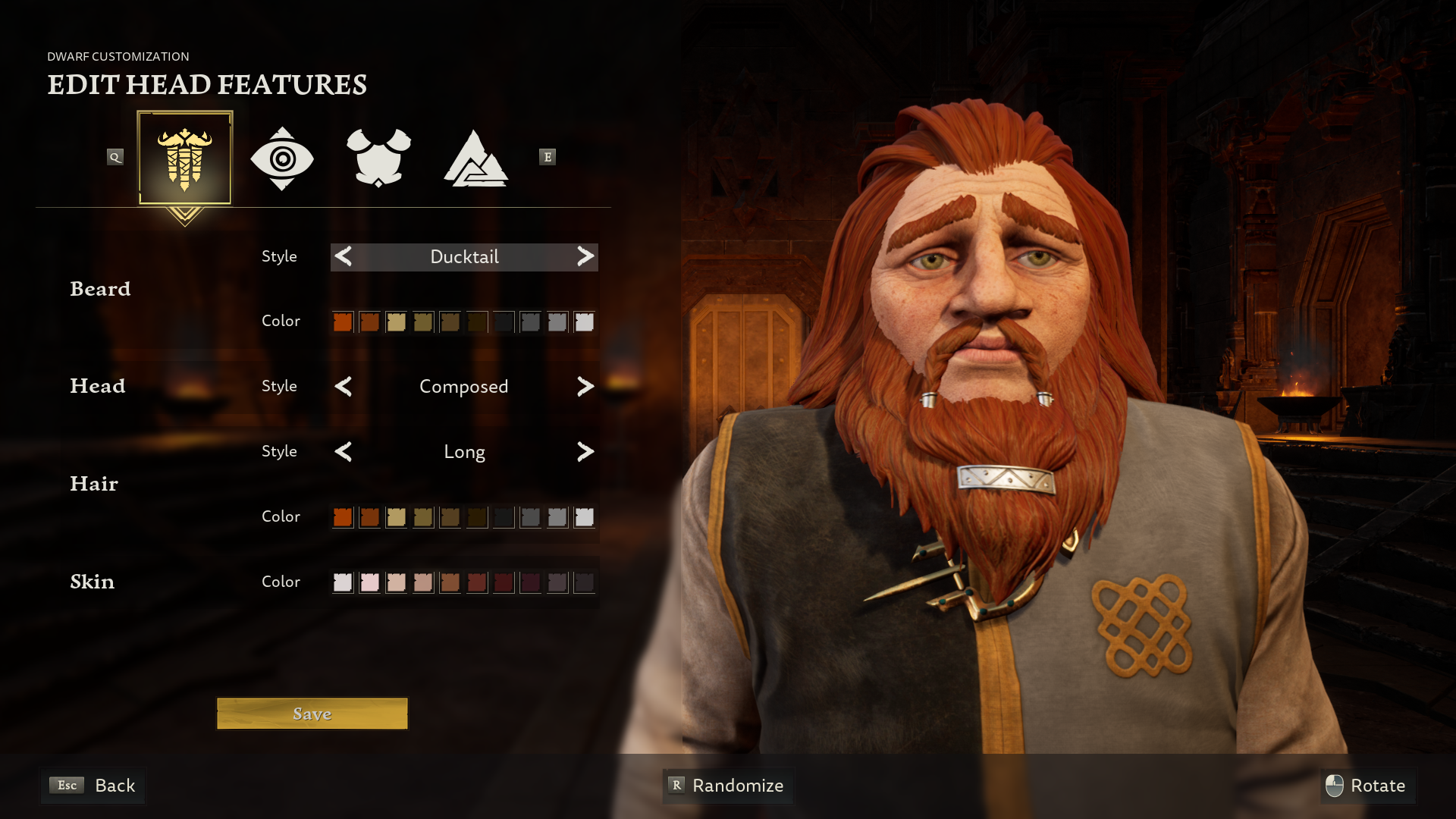
Moria is hemmed in by unbreakable walls: structural cave walls or monolithic dwarf masonry that not even the hardiest pickaxe can break through.
I had a paragraph here moaning about the custom map markers, and how they don’t show up as on-screen waypoints, but I checked again and they’re turned off by default. So if you actually want to return to things, be sure to click the little closed eye icons next to your custom map notes. They only show you vaguely where to go, but it’s a lot better than stumbling blindly in the dark.
Yes, mines and caves are famously dim and samey places—but I’m a dwarf with a massive pickaxe in my pocket. If I can’t remember the exact path to that copper ore I discovered earlier, I should be able to carve a new way, through the rock and stone. Instead, Moria is hemmed in by unbreakable walls: structural cave walls or monolithic dwarf masonry that not even the hardiest pickaxe can break through.
I came to think of Moria more as a dungeon, and Return to Moria more as a dungeon crawler. Viewed in that light, it can be a much more rewarding and atmospheric game.
Khazad-dim
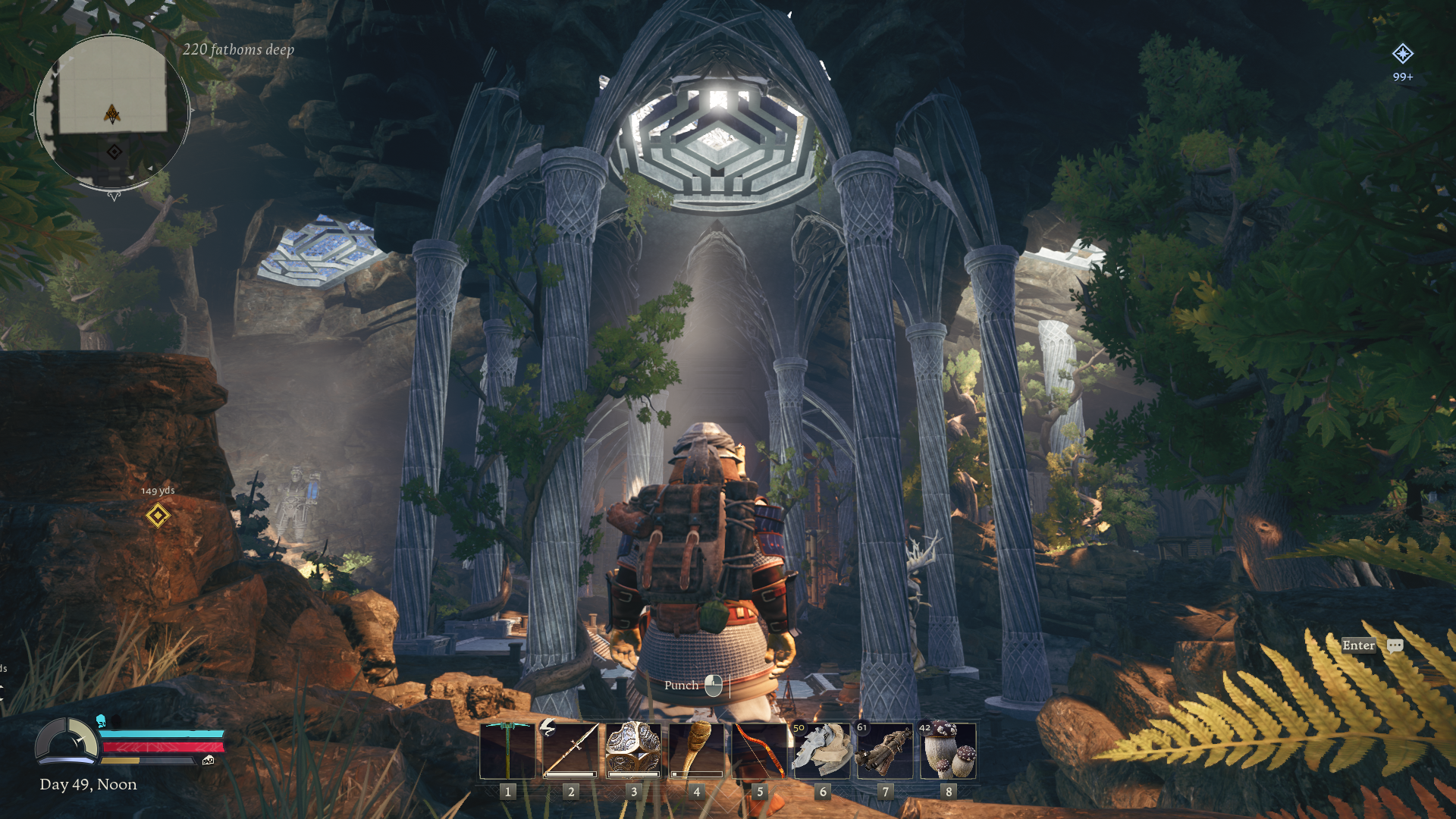
Bizarrely for a game set so deep underground, there is also a day-night cycle to worry about.
Not many games get underground areas right: they tend to be too bright, lit up by endlessly flaming torches or mysterious candles that must have been lit just before you got there. Moria, however, is properly dingy, so dark you need to hold a torch in your off-hand most of the time. The sound design also contributes to its palpable atmosphere—there’s little music and mostly a cavernous, echoing soundscape that makes you feel cold and alone, literally out of your depth.
Bizarrely for a game set so deep underground, there is also a day-night cycle to worry about. It’s somehow even darker when night falls, and the goblins and orcs that run the gaff come out in full force. You soon settle into that cycle yourself, going on expeditions in the daytime to scout out new areas or fill up your satchel with raw materials—perhaps pushing your luck when night falls if you have a few empty spaces left, and you reckon you can take on that group of spiders.
Chastened by a bolt of poisoned flob to the face, and a health bar that’s gradually ticking down, you decide to scarper for the warmth and shelter of your latest base camp. There are very few ways to restore your health outside of camp, so it’s here you return when things begin to look bleak, to repair your gear, sleep off the seeping wounds and, in the morning, chow down some roast meat or mushroom stew.
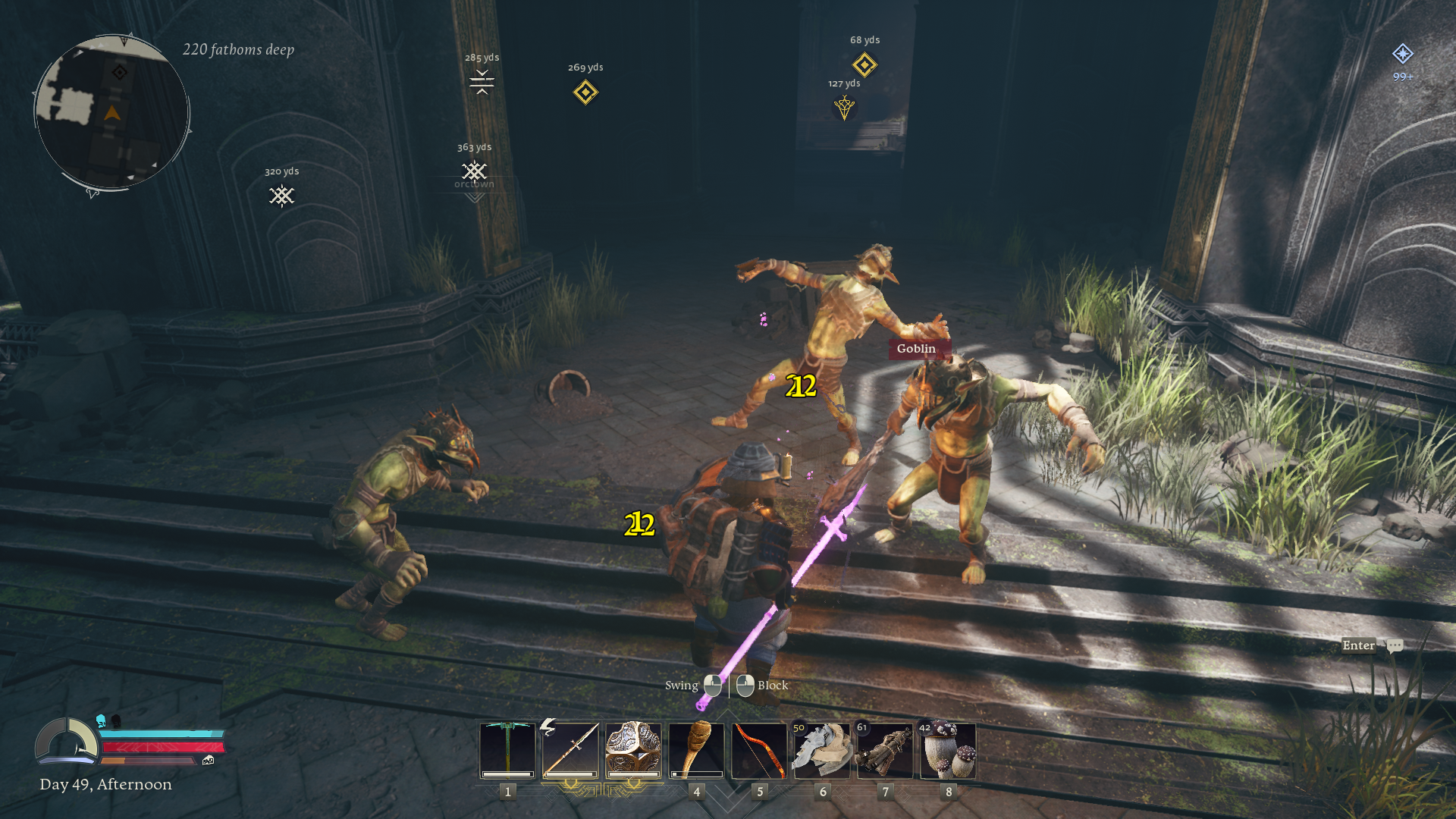
If you do die, you can return to your body to recover your gear—even leaving behind multiple corpses if you have a run of particularly bad luck – but the getting back can be extremely difficult, as you will either have to craft new gear for the return trip or take your chances with just the shirt on your hairy back.
I was definitely frustrated by this arduous process, but it adds a tension to exploration that I normally only get from Soulslikes. Finally unlocking Moria’s mapstones—which enable teleportation—was a moment on a par with the delayed bonfire-warping in the original Dark Souls.
The descent
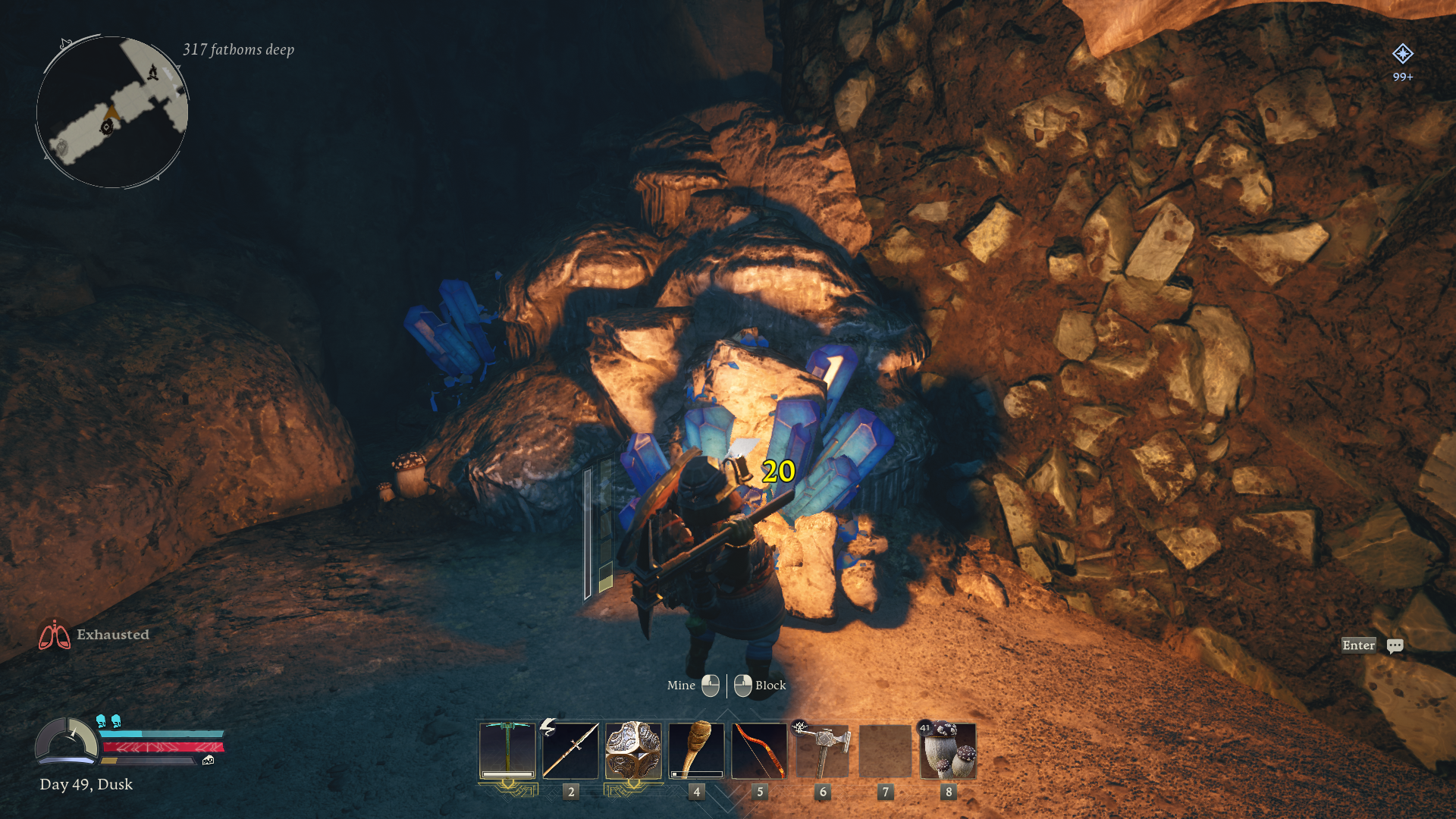
Which brings me to the most fun I had in Return to Moria, although fun is probably not the right word. The journey to the second main area involves a sheer descent down a massive pit, with very few existing ladders or platforms along the way. Instead you have to rely on your building skills, as you peer into the void and think, is that dim thing a platform? How in hell am I going to reach it?
By flinging down rope ladders and attaching wooden platforms to bulging cave walls, I was able to gingerly climb down the vast crystalline fissure. When I finally reached the bottom and established a permanent foothold, it was a real throw-your-pickaxe-into-the-air moment. If there had been more moments like that in Return to Moria, it would be tempting to overlook its significant problems.
Goblins spawned out of nowhere or lines of goblin dialogue sounded inches away, when there were none in sight.
This is not a game without ambition. Moria is simulated, to an extent, with patrols of goblins seeming to move around the world, to go out scouting or return to their camps at certain times of day. I say seeming because I could quite never trust my senses, as goblins spawned out of nowhere or lines of goblin dialogue sounded inches away, when there were none in sight.
Make too much noise as you explore and you have a chance of summoning a goblin horde—a relentless assault of baddies for a bit, until it ends, usually when you die or run far enough away. But for 99% of the game I ran everywhere, and noisily picked ore a ton, and nothing happened.
I have been onboard with the idea of a simulated underworld since I first played Arx Fatalis, which in its own way was a streamlined version of the still-peerless Ultima Underworld. Sadly, the simulation here is half-formed, and tacked on to a stiff combat system that would have felt dated on the Xbox 360.
Sticks and stones

With your weapon and shield equipped, you can attack, roll, block or charge up an attack. Or at a distance, you could lob arrows with one of the least satisfying bows in a video game. Attacks give little feedback, so the game compensates when you’re low on health by draining what little colour there is from the world. That just makes it harder to survive, and more tempting to throw in the towel and take your chances in the next life. Certain areas, like the crowded Orctown, don’t feel balanced with a single player in mind. I got lucky with the boss there by standing on a platform and cheesily pelting him with arrows. By thinking defensively rather than strolling up to shake his hand, I had stopped him from triggering properly.
I know this is a survival game and not Devil May Cry. I’m not expecting Capcom quality, but most of my worst times in Moria have involved combat. It’s rare to be able to fight just the orcs that are actually in front of you—they almost always call up their mates, who materialise behind you to divide your attention and restrict your escape. The combat feels even more awkward when you’re constantly switching between enemies, and the more enemies there are, the worse the performance.
It's a shame, because this is one of the few Lord of the Rings games to feel faithful to the license.
I’ve already mentioned the bugs, but there’s a general background stuttering that happens frequently when you’re just exploring the world, or when a lot of things (like enemies) are on-screen at once. Much of the time, Return to Moria simply doesn’t feel good to play.
It’s a shame, because this is one of the few Lord of the Rings games to feel faithful to the license. Developer Free Range Games has nailed Moria: it feels cold and dark and infested with evil, while the crafting focus is a good fit for its dwarven protagonists.
But every time I think I’m being too harsh on the game, I’ll stumble into an orc camp and have to partake in the exhausting combat, or I’ll have my camp smashed up in a seemingly random siege, or I’ll lose my way in a maze of rooms as I try to find the coal I know is around here somewhere. Ultimately it wears you down, and now I just want out of Moria. Frankly, the goblins are welcome to it.
Don’t be a fool of a Took and rush into Moria. An authentic and authentically grueling game.
Tom loves exploring in games, whether it’s going the wrong way in a platformer or burgling an apartment in Deus Ex. His favourite game worlds—Stalker, Dark Souls, Thief—have an atmosphere you could wallop with a blackjack. He enjoys horror, adventure, puzzle games and RPGs, and played the Japanese version of Final Fantasy VIII with a translated script he printed off from the internet. Tom has been writing about free games for PC Gamer since 2012. If he were packing for a desert island, he’d take his giant Columbo boxset and a laptop stuffed with PuzzleScript games.
